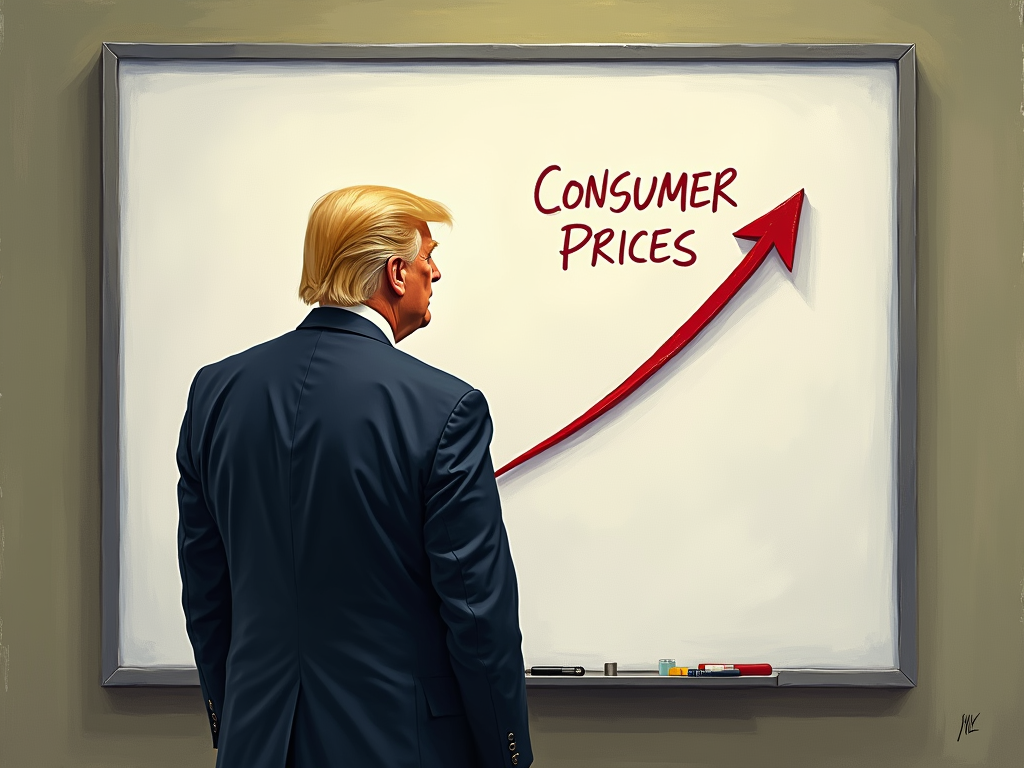President Donald Trump’s recently implemented tariffs on imports from Canada, Mexico, and China are expected to significantly impact American consumers through higher prices on everyday goods, according to economic analyses and expert opinions. With the tariffs already affecting markets and more expected to come in April, many Americans are adjusting their purchasing habits as economic concerns grow.
The Expanding Scope of Trump’s Tariff Policy
On March 4, 2025, Trump’s administration implemented 25% tariffs on imports from Canada and Mexico, along with increasing tariffs on Chinese goods to 20%315. These represent the highest effective U.S. tariff rates since the 1940s, marking a dramatic shift in American trade policy7.
The tariffs initially included some exceptions, such as a lower 10% rate on Canadian energy products and temporary exemptions for auto imports and goods that comply with the U.S.-Mexico-Canada Agreement (USMCA)1012. However, these exemptions are set to expire on April 2, when Trump has indicated additional tariffs will take effect on automobiles, semiconductors, and pharmaceuticals12.
“We believe it is prudent to await more clarity regarding economic developments,” stated Federal Reserve Chair Jerome Powell during a recent news conference. “It’s quite challenging to predict how this situation will unfold.”4
Rising Costs for American Households
Multiple economic analyses suggest these tariffs will substantially increase costs for American consumers. According to new analysis by the Yale Budget Lab, these tariffs will cost the average American family an additional $1,600 to $2,000 per year6. The nonpartisan Tax Foundation offers a slightly lower but still significant estimate of $1,072 per U.S. household16.
“And because tariffs are regressive, families at the bottom of the income ladder will shoulder more of a burden as a share of their income than those at the top of the income scale,” notes a Joint Economic Committee report6.
Despite Trump’s claims that foreign countries will pay for these tariffs, evidence from his previous administration suggests otherwise. Studies of Trump’s first-term tariffs found that “U.S. consumers have borne the entire incidence of U.S. tariffs,” with Americans at auto lots and supermarkets shouldering what’s known as a “one hundred percent pass-through” of the tariff tax17.
Product-Specific Price Increases Expected
The costs of specific goods that Americans depend on are expected to rise significantly across multiple categories:
- Electronics like computers, phones, and televisions will see overall prices rise by nearly 11%6
- Clothing prices are expected to increase by 7.5%6
- Cars, car parts, and other motor vehicles are projected to increase by over 6%6
- Oil will rise by 1.7%, making it more expensive for families to fill up their gas tanks and heat their homes6
- Food prices overall will rise by nearly 2%, with fresh produce prices jumping by nearly 3% and rice increasing by 4.4%6
Federal Reserve Chair Jerome Powell acknowledged on Wednesday that tariffs had contributed to a “good part” of recent price increases11. The Federal Reserve has adjusted its inflation forecast for 2025 upward while revising its expectations for economic growth downward in response to these trade policies4.
Consumer Responses to Tariff Uncertainty
Americans are responding to these new economic pressures in various ways. Some consumers began preparing for tariffs even before they took effect. In a survey conducted earlier this year, about 40% of respondents said they are likely to stockpile goods, and about a third would set aside money in preparation for possible price hikes8.

Others are cutting back on spending and increasing their emergency savings. Amber Walliser, a 32-year-old accountant from Ohio, initially stocked up on household appliances she anticipated would rise in price. However, her family is now tightening their belts, anxious about job stability and the potential for economic decline.
“We’re trying to save as much as we can, just accumulating cash and building up our emergency savings,” she stated18.
Economic Outlook and Long-Term Implications
Economic experts warn that the long-term costs of these tariffs could be substantial. The Tax Foundation estimates that based on what’s already been announced, the average tariff across all U.S. imports will rise from 2.5% to 13.8%, potentially resulting in a 0.55% reduction in annual GDP17.
“If these tariffs are kept in place in the months ahead, we expect to see slowing growth, an uptick in inflation, and a hit to consumer and business confidence,” states an analysis from RBC7.
The Federal Reserve now expects inflation to stand at 2.8% by the end of 2025, slightly higher than their previous prediction of 2.5%, while economic growth is projected at 1.7%, below the earlier estimate of 2.1% 411.
International Response and Escalating Trade Tensions
The implementation of these tariffs has not gone unanswered. China, Canada, and Mexico have all announced retaliatory measures that could further impact the U.S. economy15.
China is imposing tariffs of up to 15% on a wide array of key U.S. farm exports, including American-grown chicken, pork, soy, and beef. It has also expanded the number of U.S. companies subject to export controls and other restrictions15.
Canada and Mexico have similarly announced retaliatory tariffs on U.S. goods, potentially exacerbating economic concerns and further impacting American businesses and consumers15.
What Consumers Can Expect Going Forward
As April 2 approaches with the expectation of additional tariffs, American consumers face increasing economic uncertainty. The OECD has warned that Trump’s tariff hikes will drag down growth in Canada, Mexico, and the United States while driving up inflation14.
While Trump has suggested that tariffs will boost U.S. manufacturing and protect jobs, raising tax revenue and growing the domestic economy9, many economic analyses predict that the trade war will lead to higher prices, slower growth, and potential job losses in certain sectors.
For now, American consumers are caught in the middle of this escalating trade dispute, facing the prospect of higher prices across a wide range of goods while simultaneously dealing with concerns about broader economic stability. As one analysis bluntly concluded: “Someone may get rich from this trade war, but it’s not going to be America.”17
Citations:
- https://www.whitecase.com/insight-alert/president-trump-expands-steel-and-aluminum-tariffs-all-countries-effective-march-12
- https://www.pwc.com/us/en/services/tax/library/how-trumps-tariffs-could-impact-us-companies.html
- https://www.axios.com/2025/03/04/trump-tariffs-impact-china-canada-mexico
- https://www.usatoday.com/story/money/2025/03/19/fed-rates-unchanged-tariffs/82525419007/
- https://www.cbsnews.com/news/trump-tariffs-what-will-cost-more-inflation/
- https://beyer.house.gov/uploadedfiles/jec_house_dems_trump_tariffs_report_3.3.25.pdf
- https://thoughtleadership.rbc.com/what-is-the-impact-of-tariffs-on-the-us-economy/
- https://news.uchicago.edu/story/what-effect-will-trumps-tariffs-have-us-economy
- https://www.bbc.com/news/articles/cn93e12rypgo
- https://www.whitehouse.gov/fact-sheets/2025/03/fact-sheet-president-donald-j-trump-adjusts-tariffs-on-canada-and-mexico-to-minimize-disruption-to-the-automotive-industry/
- https://abcnews.go.com/Business/fed-set-make-interest-rate-decision-outbreak-trade/story?id=119905993
- https://taxfoundation.org/research/all/federal/trump-tariffs-trade-war/
- https://www.piie.com/research/piie-charts/2025/trumps-tariffs-canada-mexico-and-china-would-cost-typical-us-household
- https://www.reuters.com/world/us/trump-says-no-exemptions-steel-aluminum-tariffs-2025-03-17/
- https://apnews.com/article/trump-tariffs-explainer-399b5d4da6e6be77cefabf25ceaa8191
- https://www.npr.org/2025/02/05/nx-s1-5284991/trump-tariffs-higher-prices-inflation-mexico-canada-china
- https://fortune.com/2025/03/16/trump-tariffs-how-they-work-economy-recession-predictions/
- https://www.bbc.com/news/articles/ceqjpn3n50go
- https://www.brookings.edu/articles/trumps-tariffs-are-not-going-over-well-with-his-base/

